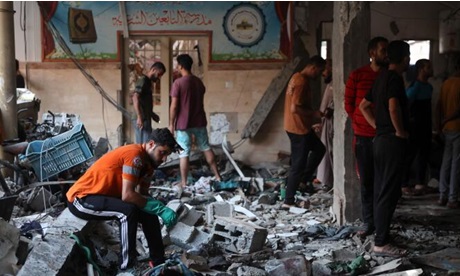Despite renewed discussions in Cairo between Israel and Hamas, as well as U.S. Secretary of State Antony Blinken’s mention of a “last chance” negotiation, the hope for a ceasefire in the Gaza Strip continues to fade.
Once again, it seems that the negotiations, which resumed August 21 in Cairo, are likely to fail.
During the Democratic convention, U.S. President Joe Biden stated August 20 that Hamas was “backtracking” on the negotiations for a potential agreement between Israel and the Palestinian movement.
Thousands of deaths changing the dynamics
Hamas rejected the American statement, labeling it as a “green light” for Israel to continue the war.
The Palestinian movement argued that the latest proposals differ significantly from the original plan proposed by the American president, which they claim has now “conceded to new Israeli demands.”
Israeli Prime Minister Benjamin Netanyahu’s government is demanding a permanent Israeli military presence along the Philadelphi Corridor, a 14-kilometer border between Gaza and Egypt, as well as the Netzarim Corridor, an Israeli-controlled axis that bisects the Gaza Strip.
However, just two days after the discussions began in Doha August 17, the United States, Qatar, and Egypt had assured that an agreement was “close” to being signed.
But the number of victims in the Gaza Strip—over 40,200 dead, according to the Islamic movement—has changed the situation.
“Hamas cannot sign a discounted agreement.
“It knows full well that, from the perspective of the Palestinian population, particularly in the Gaza Strip, there will be a sense of having suffered for ten months, lost thousands of people, only to settle for an agreement that doesn’t even meet the primary demands of its population,” said Thomas Vescovi, an independent researcher and specialist on Israel and Palestine.
On the other hand, Israeli Prime Minister Benjamin Netanyahu faces a similar dilemma with the victims of October 7 and the hostages.
“The final decision comes from the Gaza Strip”
The centralisation of Hamas’s power in Gaza over the past few months, which intensified after the July 31 assassination of Ismail Haniyeh, the main interlocutor and official leader of the Palestinian movement, further diminished the hope for an agreement.
The late Haniyeh was replaced by Yahya Sinwar, Hamas’s leader in Gaza, who is entrenched in tunnels and is considered the mastermind behind the October 7 attacks.
“For now, the final decision comes from the Gaza Strip, and therefore inevitably from Yahya Sinwar and other leaders present there,” Vescovi explained.
“We can see that, after ten months of war, Hamas is still able to rebuild its forces in Gaza, recruit, and arm itself, so from that point, I don’t see any other political force capable of competing with this leadership, at least in Gaza.”
During negotiation sessions, the Israeli delegation interacted with a Hamas representative team, which, in reality, holds very little power. Khalil Al-Hayya, the unofficial foreign affairs minister based in Qatar, generally represents the team.
According to Vescovi, “As long as there is no ceasefire in the Gaza Strip, we cannot imagine a reduction in tensions.”
- First published in La Croix International
- Kilian Bigogne is a journalist at La Croix
News category: Analysis and Comment.




